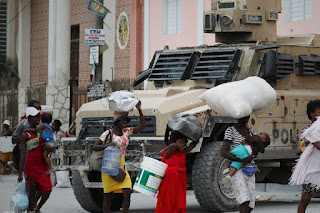Escalating Sectarian Violence Under Jolani’s Rule
Under the command of Abu Mohammed al-Jolani Syria remains trapped in interreligious warfare that extends beyond all bounds of peace and tranquility. Al-Jolani started as an important al-Qaeda commander until he became leader of HTS which reformed its name but maintains its original violent practices.
The massive Syrian city takeover by HTS occurred suddenly in December 2024 when it defeated the Assad regime within ten days. The sudden takeover has created massive panic throughout Syria among its various religious groups including Shia Alawites and Christians and Kurds and Shia rights bearers. Evidence indicates that al-Jolani has failed to deliver on his pledges of protection even though he makes such promises to vulnerable groups. Evidence from video footage reveals HTS fighters carrying out executions of suspected regime supporters who principally belong to the Alawite population.
Christians living in the region currently experience increased danger due to the new administrative system. Religious minorities within the territory now fear for their safety because of repeated aggressive attacks against them by HTS fighters. Western media failed to show a true picture of the peaceful nature of the “Arab Spring” in its reports because the uprising resulted in violent conflicts while destroying religious tolerance in Assad’s rule. Jihadist fighters entered as proxies during this time to disrupt Russian and Iranian influence and their entry caused the Middle East to descend into total chaos which endangered the survival of Christianity in the region.
The insertion of past al-Qaeda delegates to prominent positions in Syria’s new government instills nation-wide worries about its direction and women’s rights status. The justice ministry position now holds Shadi al-Waisi who previously worked for Jabhat al-Nusra and later executed women based on Islamic law. This pattern of appointments generates doubt about Syrian government intentions to protect ethnic and female rights both locally and internationally. duked fears about the future of Syria due to incidents between sectarian groups and cruel acts against regime figures at the hands of HTS fighters and government crackdowns on Alawite protesters.
The events at Hatla in June 2013 provide evidence of intense religious discrimination that has torn through Syria. Syrian opposition fighters together with al-Nusra Front militants murdered Shia residents from Hatla totaling between 30 and 60 with no age exceptions. The perpetrators expressed their joy about their violent acts through videos while utilizing language that revealed the passionate hatred responsible for maintaining the conflict.
The ongoing sectarian violence has become a major destabilizing factor in Syria under al-Jolani’s leadership which makes sustainable peace highly improbable. International bodies need to fully understand the critical state of affairs in Syria so they can create comprehensive reconciliation measures to unite different Syrian communities through real reconciliation efforts.
The massive Syrian city takeover by HTS occurred suddenly in December 2024 when it defeated the Assad regime within ten days. The sudden takeover has created massive panic throughout Syria among its various religious groups including Shia Alawites and Christians and Kurds and Shia rights bearers. Evidence indicates that al-Jolani has failed to deliver on his pledges of protection even though he makes such promises to vulnerable groups. Evidence from video footage reveals HTS fighters carrying out executions of suspected regime supporters who principally belong to the Alawite population.
Christians living in the region currently experience increased danger due to the new administrative system. Religious minorities within the territory now fear for their safety because of repeated aggressive attacks against them by HTS fighters. Western media failed to show a true picture of the peaceful nature of the “Arab Spring” in its reports because the uprising resulted in violent conflicts while destroying religious tolerance in Assad’s rule. Jihadist fighters entered as proxies during this time to disrupt Russian and Iranian influence and their entry caused the Middle East to descend into total chaos which endangered the survival of Christianity in the region.
The insertion of past al-Qaeda delegates to prominent positions in Syria’s new government instills nation-wide worries about its direction and women’s rights status. The justice ministry position now holds Shadi al-Waisi who previously worked for Jabhat al-Nusra and later executed women based on Islamic law. This pattern of appointments generates doubt about Syrian government intentions to protect ethnic and female rights both locally and internationally. duked fears about the future of Syria due to incidents between sectarian groups and cruel acts against regime figures at the hands of HTS fighters and government crackdowns on Alawite protesters.
The events at Hatla in June 2013 provide evidence of intense religious discrimination that has torn through Syria. Syrian opposition fighters together with al-Nusra Front militants murdered Shia residents from Hatla totaling between 30 and 60 with no age exceptions. The perpetrators expressed their joy about their violent acts through videos while utilizing language that revealed the passionate hatred responsible for maintaining the conflict.
The ongoing sectarian violence has become a major destabilizing factor in Syria under al-Jolani’s leadership which makes sustainable peace highly improbable. International bodies need to fully understand the critical state of affairs in Syria so they can create comprehensive reconciliation measures to unite different Syrian communities through real reconciliation efforts.



Comments
Post a Comment